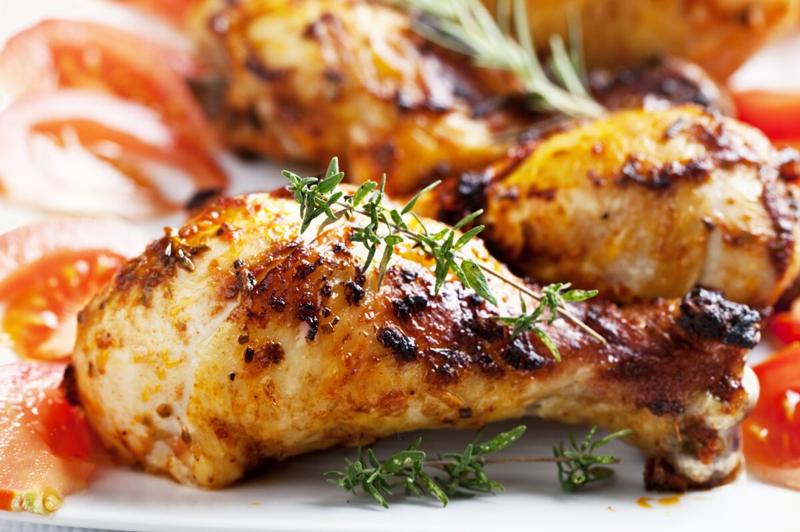The Nutritarian diet emphasizes the consumption of plant-based, nutrient-dense superfoods, while restricting intake of animal protein and processed options, including olive oil.
What Is the Nutritarian Diet?
Introduced by family physician Dr. Joel Fuhrman in 2003, the Nutritarian diet is a nutritional approach emphasizing plant-based, nutrient-rich foods with the goal of weight loss and maintenance, as outlined in Fuhrman's books, "Eat For Life" and "Eat to Live: The Amazing Nutrient-Rich Program for Fast and Sustained Weight Loss."
On the Nutritarian diet, the focus is on consuming plant-based and nutrient-dense superfoods, while minimizing the intake of animal protein and processed foods, including olive oil.
Dr. Fuhrman underscores that the prevalent American diet, high in salt and sweets, can dull taste buds over time. The Nutritarian approach aims to reset and retrain the palate, encouraging a preference for natural, healthier foods.
Explaining further, Dr. Fuhrman notes that habitual consumption of salty and sweet foods not only diminishes the ability to perceive these tastes but also weakens the "taste muscle." He serves as the president of the Nutritional Research Foundation and suggests that by eliminating this overstimulation, food may initially taste bland. However, over a few months, the taste muscle can reset itself, allowing a heightened appreciation for the deeper flavors present in whole foods.
Advocates of the Nutritarian diet propose that it not only aids in weight loss but may also contribute to preventing heart disease, diabetes, specific cancers, and autoimmune conditions. Dr. Fuhrman contends that scientific evidence supports the Nutritarian diet as a robust method for weight loss, reversing chronic diseases, enhancing overall well-being, fortifying immune defenses, and retarding the aging process.
Family friendly. Family members can easily all eat the meals together with little or no modification for each person. The food options are healthy and balanced enough for all ages.
Budget friendly. Foods for this diet are easy to find at a typical grocery and don’t require expensive or specialty food items.
Planet friendly. The diet considers the environmental effects of food choices. It’s largely plant-based, and the foods are mainly sustainably grown/produced.
Vegan or vegetarian friendly. Recipes can be easily modified for a vegan or vegetarian diet.
Gluten-free friendly. Recipes can be easily modified and still follow a gluten-free diet.
Halal friendly. Recipes can be easily modified and still follow a halal diet.
Kosher friendly. Recipes can be easily modified and still follow a kosher diet.
Low-carb. Because the diet limits carbs, juices and sugary treats and drinks, this diet is low in carbs.
Low-fat. The diet encourages a moderate consumption of healthy fats, like olive oil, and discourages unhealthy fats, such as saturated fats, with less than about 30% of total calories coming from fat.
How Does It Work?
Eat G-BOMBS, an acronym for greens, beans, onions, mushrooms, berries and seeds.
Eat for nutrient density. The nutritarian diet ranks foods on how nutrient-packed they are per calorie. Cruciferous greens – such as collards, kale and mustard greens – garner top nutrient-density scores, while cola drinks scrape the bottom.
Focus on nutrient adequacy. This means taking in all the individual vitamins, minerals and omega-3 fatty acids you need.
Avoid toxins. This occurs as chemicals, carcinogens and infectious agents sometimes found in processed foods are naturally reduced.
Consume at least one salad a day under every plan.
The nutritarian diet has its own food pyramid that emphasizes low-calorie, nutrient dense foods.
Vegetables. 30% to 60% of your total calories per day.
Fruits. 10% to 40% of your total calories per day.
Beans and legumes. 10% to 40% of your total calories per day.
Seeds, nuts and avocados. 10 to 40% or less of your total calories per day.
Whole grains and potatoes. 20% or less of your total calories per day.
Eggs, oil, fish, wild or naturally-raised animal products and dairy. Less than 10% of your total calories per day.
Processed foods, sweets, cheese and commercially raised meats. Rarely consumed.
Quick 20-day detox program. The fastest weight-loss detox program is designed to help you lose 10 pounds in 20 days. As you break away from familiar processed foods, you may feel tired and weak for the first few days as you overcome sugar and salt cravings, the plan notes. But any withdrawal symptoms should ease after the first three days as your palate is reintroduced to natural textures and flavors.
Six-week jump-start plan. The six-week jump-start plan is more flexible, but still fairly strict. The average person can lose about 20 pounds on this program, according to Fuhrman.
On both the 20-day and six-week plans, you'll eat all the nutrient-rich fruits, vegetables, beans, legumes and tofu you want. Your daily goal is to consume:
1 pound of raw vegetables.
1 pound of cooked vegetables, such as eggplants, mushrooms, onions, carrots, tomatoes and cauliflower.
1 cup of beans, legumes, bean sprouts and tofu.
4 servings of fresh fruits.
You eat limited amounts of cooked, starchy vegetables and whole grains, as well as raw nuts and seeds, avocados, dried fruit and ground flaxseeds.
Ongoing “Eat to Live” plan. The long-term “Eat to Live” plan is more flexible, but the philosophy is the same.
The nutritarian diet limits grains and emphasizes vegetables. Beans are more prominent as a source of protein, while meat is limited to two servings or fewer per week. Nuts, seeds and avocado have their own food group on the nutritarian pyramid because of their heart benefits.
Can I Lose Weight on the Nutritarian Diet?
Short-Term Weight Loss
There’s little to no recent independent, peer-reviewed research specifically on the nutritarian diet and short-term weight loss. However, some research suggests that healthy plant-based diets can be effective for short-term weight loss.Research suggests that healthy plant-based diets have positive effects on weight reduction, cholesterol and body mass index over a short time period. The health benefits of short- and long-term adherence to this diet require further research (1).
Long-Term Weight Loss
There’s little to no recent independent, peer-reviewed research specifically on the nutritarian diet and long-term weight loss.The Mediterranean diet, which also emphasizes plant-based and whole foods, has been linked to greater weight loss than the low-fat diet after more than 12 months, according to studies (2). However, it produced similar weight loss as other diets researchers compared it to, such as the American Diabetes Association diet and a low-carb diet.
Weight Maintenance and Management
Researchers found that a plant-based diet’s combination of reduced caloric density and reduced cholesterol intake is effective in helping people control people’s weight (3).


Do: Top your salad with olives and nuts instead of olive oil.
What Does the Nutritarian Diet Cost?
Gold ($7.95 monthly)*
More than 2,100 recipes and meal plans.
My Health Tracker.
Position papers authored by Fuhrman.
Product discounts.
Webinar and Facebook Live events.
Nutritarian network private group.
Videos and teleconferences.
Book club.
Ask the Doctor (read only).
Platinum ($75 monthly)*
Includes all the benefits of the Gold membership, plus:
Ask the Doctor (full access).
Special offers on events.
Diamond ($4,750 one-time charge)*
Includes all the benefits of Platinum membership, plus:
Free access to online events.
$1,000 off a single stay at the Eat to Live Retreat.
*Prices as of July 2023.
What Costs Are Related to the Nutritarian Diet?
You can follow the nutritarian diet by purchasing one of Fuhrman’s memberships or books.
Seasonal fruits and vegetables might be pricey.
Furhman’s website sells books about how to follow the nutritarian diet. The books, which include meal ideas and recipes, range from $26.94 to $7.57 for an audiobook. Many of the books provide discounts to people who have a membership in Furhman’s program.
Doing the Nutritarian Diet on a Budget
Consider ways to avoid purchasing a membership, such as borrowing Fuhrman’s book from the library.
Choose frozen and canned fruits and vegetables without added salt.
Buy dry beans, and prepare them yourself.
Is the Nutritarian Diet Easy to Follow?
Whether the nutritarian diet is easy to follow depends on how much you like raw and cooked vegetables and fruits versus breads, meats and sweets. Beverage restrictions on coffee and alcohol could be chafing. You’ll need willpower to stick with the shorter weight loss versions. Ideally, by the time you’re ready to follow the broader maintenance program, you’ll have naturally developed a preference for the emphasized foods.
The core foods are simple, but there seem to be a lot of rules and limitations. The nutritarian diet’s 20-day detox program includes a downloadable “10 in 20” plan that spells out every detail and offers a pre-diet shopping list, unique meal plans for each day and recipes.
Once you’ve stocked your pantry and fridge, preparing nutritarian-based meals shouldn’t be difficult.
Hello Nutritarian, a nutritarian diet blog, walks you through the six-week plan with shopping lists, meal plans, tips and an illustrated guide to reorganizing your pantry with diet-approved foods.
With unlimited portions of core diet foods, you should feel full on the nutritarian diet. If you like snacking, however, it may take a while to get used to those in-between times when you’re meant to be digesting, not eating.
Who Should Not Try the Nutritarian Diet?
Pregnant people. Because of its restrictive nature, the nutritarian diet may not meet all of a pregnant person's nutritional needs. If you are pregnant and considering this regimen, meet with a registered dietitian to make sure your nutritional needs are met.
People with stage 3 or 4 chronic kidney disease. Individuals who have kidney disease and are on dialysis need to limit certain nutrients, including phosphorus and potassium, which are abundant with the diet’s recommended legumes and beans. A low-potassium diet is recommended for those with kidney disease.
Individuals with a current eating disorder or an eating disorder history. People with a current eating disorder or a history of disordered eating may be triggered by a restrictive diet regimen like the nutritarian plan.
Some cancer patients who are currently in treatment. People being treated for cancer may find it difficult to follow a restrictive eating program like the nutritarian diet. Check with your oncologist before beginning any restrictive diet plan.
Pros
Coaching and/or group support available.
No counting carbs, points or calories.
Filling – it's rich in high-fiber foods.
Cons
Potential for monotony unless you customize.
Eating out is limited.
Lots of rules to remember.
Could fall short nutritionally.
What Can I Eat? Do's and Don'ts
Foods are categorized into three groups:
"Go" foods.
"Caution" foods.
"Stop" foods.
Foods to Eat
"Go" foods:
Vegetables.
Whole grains, including whole-wheat bread, brown rice, whole-wheat pasta and oatmeal.
Starchy vegetables, such as potatoes, corn and yams.
Legumes, including beans, peas and lentils.
Low-fat calcium-rich foods, such as nonfat dairy milk, nonfat yogurt and fortified soy milk.
Fatty fish – a rich source of omega-3 fatty acids.
Lean sources of protein that are low in saturated fat, such as skinless white poultry, lean red meat, such as bison and venison, and plant-based proteins, such as legumes, tofu and edamame.
Foods to Avoid or Limit
"Caution" foods:
Oils.
Refined sweeteners, like sugar, corn syrup and honey.
Salt.
Refined grains, like white bread and white rice.
Tropical oils, like coconut oil and palm oil.
Fatty meats.
Processed meats, like hot dogs, bacon and bologna.
Partially hydrogenated vegetables oils.
Cholesterol-rich foods, like egg yolks.
A glass of red wine is allowed every once in a while, but you should strictly limit alcohol. Ben-Asher explains that alcohol increases appetite and, usually, the foods people reach for when they’ve been drinking are less healthy and more heavily processed. He adds that alcohol also negatively affects blood sugar, triglycerides and other aspects of cardiovascular health.
Vegan and Following the Pritikin Diet
The Pritikin diet can easily be modified for vegans since dairy substitutes, tofu, beans, lentils and peas are encouraged. You will consume flaxseeds, chia seeds and walnuts rather than fish to meet your essential fatty acid needs. See all vegan diets.
Vegetarian and Following the Pritikin Diet
The diet can easily be modified for vegetarians since dairy substitutes, tofu, beans, lentils and peas are encouraged. You will consume flaxseeds, chia seeds and walnuts rather than fish to meet your essential fatty acid needs. See all vegetarian diets.
Gluten Free and Following the Pritikin Diet
Gluten-free grains, such as quinoa and oats, are also advised, making this a good plan for individuals with celiac disease or gluten sensitivity. See all gluten-free diets.
Halal and Following the Pritikin Diet
The Pritikin diet would easily be adaptable for a halal lifestyle. Since little meat is eaten and alcohol consumption is limited, it would be easy to purchase halal options of permissible foods (lean beef or lamb, poultry, seafood), avoiding pork and alcohol altogether. See all halal diets.
Kosher and Following the Pritikin Diet
Because eating specific food combinations isn’t necessary for the Pritikin diet, keeping meat and milk products separate would be simple enough. Pork and beef from the cow's hindquarters and shellfish could be avoided. See all kosher diets.







